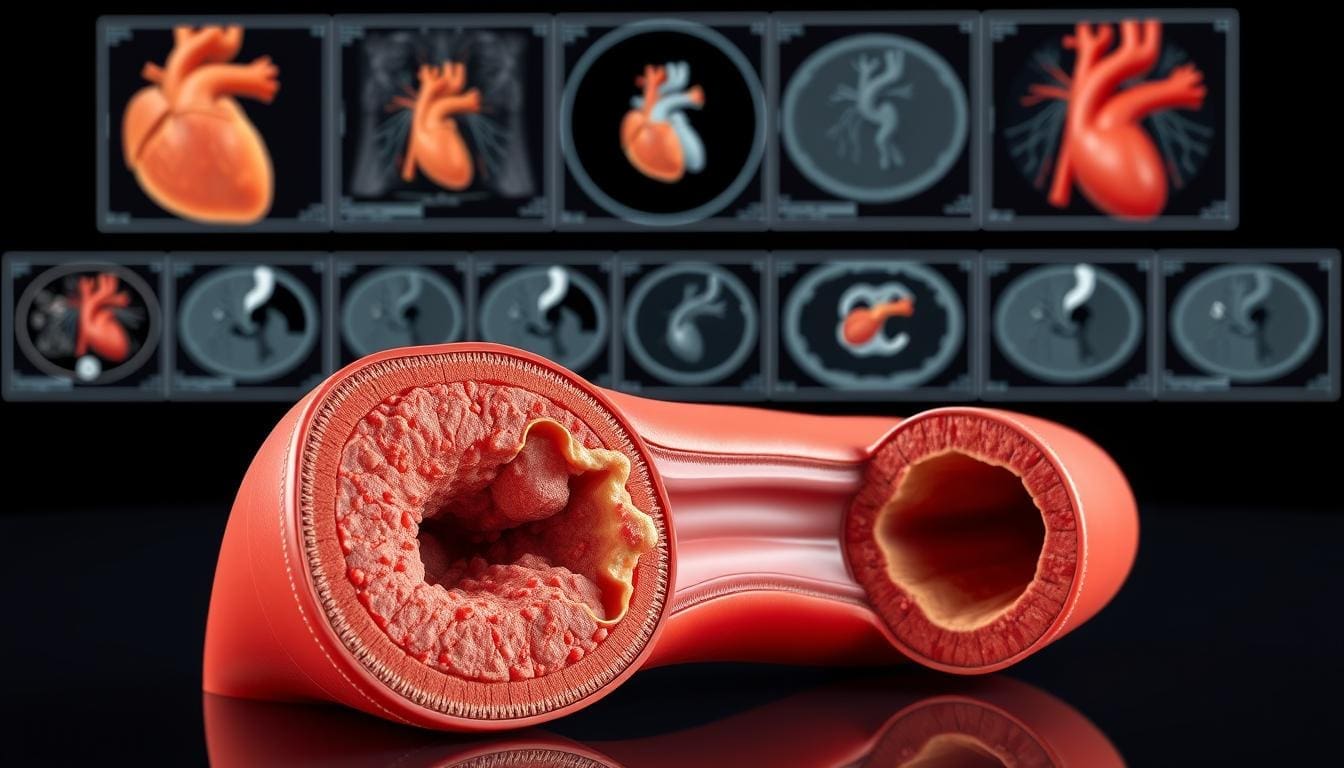Last Updated on November 27, 2025 by Bilal Hasdemir
At Liv Hospital, we know how important it is to understand radiation doses in medical imaging. As a patient, you might wonder about the safety of tests like panoramic x-rays. We compare the radiation dose of panoramic x-rays with CT scans and chest x-rays to help you understand their safety.

A typical panoramic x ray radiation dose is about 0.01 millisieverts. This is much lower than CT scans and chest x-rays. Knowing about exposure x-ray levels helps you make better choices for your health. In this article, we’ll look at seven key facts about radiation doses in medical imaging. We’ll show how safe panoramic x-rays are compared to others.
Key Takeaways
- Panoramic x-rays have a lower radiation dose compared to CT scans and chest x-rays.
- The typical radiation dose for a panoramic x-ray is around 0.01 millisieverts.
- Understanding radiation doses helps patients make informed decisions about their care.
- Liv Hospital is committed to patient-centered care and safety in medical imaging.
- We adhere to international standards for radiation safety.
- Comparing radiation doses between different imaging modalities provides valuable insights.
- Patient education is a key aspect of our care at Liv Hospital.
Understanding X-Ray Radiation Measurement Units
To grasp the risks of X-ray radiation, we need to know how it’s measured. The units for X-ray radiation exposure are key to figuring out the dose patients get during scans.
What Are Millisieverts and Microsieverts?
X-ray doses are measured in millisieverts (mSv) or microsieverts (μSv). Millisieverts are the main unit for the effective dose of radiation. This lets us compare the risks of different scans. One millisievert equals 1,000 microsieverts. For example, a chest X-ray usually gives about 0.1 mSv.
The effective dose, in millisieverts, considers how different parts of the body react to radiation. This is why it’s good for comparing the risks of various scans.
How X-Ray Exposure Units Are Standardized
Standardizing X-ray units is vital for keeping doses the same everywhere. The International Commission on Radiological Protection (ICRP) sets rules for measuring and calculating doses from scans, like X-rays.
To show how doses are standardized and compared, let’s look at a table:
| Imaging Procedure | Typical Dose (mSv) | Equivalent Background Radiation |
| Chest X-Ray | 0.1 | 10 days |
| Panoramic X-Ray | 0.01 | 1 day |
| CT Scan (Abdomen) | 8 | 2.2 years |
This table shows how different scans give different doses of radiation, in millisieverts. Knowing these doses helps doctors and patients decide when to use X-ray scans.
By knowing how X-ray radiation is measured and standardized, we can better see the risks and benefits of different scans.
Fact 1: Panoramic X Ray Radiation Dose Is Remarkably Low
The radiation dose from a panoramic X-ray is surprisingly low. This makes it a safe tool for dental diagnosis.
Typical Dose of 0.01 Millisieverts Explained
A typical panoramic X-ray exposes a patient to about 0.01 millisieverts of radiation. This is a very low dose. It’s important to understand millisieverts measure the biological effects of radiation.
For example, a chest X-ray has a dose ten times higher, at 0.1 mSv. This shows how low the dose from panoramic dental imaging is.
Equivalent to Just Days of Natural Background Radiation
The 0.01 mSv dose from a panoramic X-ray is like the natural background radiation we get in a few days. Natural background radiation comes from the environment, like cosmic rays and radon gas.
In short, getting a panoramic X-ray is like getting a small amount of natural radiation over a short time. This makes panoramic X-rays seem safer, as it puts the dose into a familiar context.
Fact 2: Chest X-Ray Radiation Is 10 Times Higher Than Panoramic
Let’s look at the second key fact: the big difference in radiation doses between chest X-rays and panoramic X-rays. Knowing the radiation exposure for different tests is key for patient safety and making smart choices.
Chest X-rays are used to check the lungs, heart, and chest wall. But, they give off more radiation than panoramic X-rays. A chest X-ray usually has a radiation dose of about 0.1 millisieverts.
Standard CXR Radiation Levels of 0.1 Millisievert
A standard chest X-ray exposes patients to about 0.1 millisieverts of radiation. This is 10 times more than a panoramic X-ray, which is about 0.01 millisieverts. A radiology expert says,
“The difference in radiation exposure between chest X-rays and panoramic X-rays is significant, and this information is key for both patients and healthcare providers when choosing the right imaging technique.”
How Much Radiation Is in a Chest X-Ray Compared to Daily Exposure
A chest X-ray’s 0.1 millisievert radiation dose is a lot compared to daily background radiation. The average person gets about 3 millisieverts of background radiation per year, or 0.008 millisieverts per day. So, a chest X-ray is like 12 days of natural background radiation. Even though it’s a lot, the benefits of imaging tests often outweigh the risks.
While panoramic X-rays have less radiation, the right imaging choice depends on the patient’s needs. Choosing lower radiation tests, like panoramic X-rays for dental exams, helps reduce overall radiation exposure.
In summary, knowing the radiation doses for different tests helps patients and healthcare providers make better choices. By picking the right imaging test, we can balance the benefits of imaging with the risks of radiation.
Fact 3: CT Scan Radiation Doses Are Significantly Higher
CT scans give off much more radiation than X-rays. This is important for both patients and doctors to know. It helps them decide if the benefits of imaging are worth the risks.
How Many Millisieverts in a CT Scan
A CT scan uses a lot more radiation than regular X-rays. For example, a CT scan of the abdomen uses a lot of radiation. The exact amount depends on the type of scan and the equipment used.
Abdominal CT Radiation Dose Averages 8 Millisieverts
An abdominal CT scan usually gives off about 8 millisieverts of radiation. This is like getting 3.2 years of natural background radiation.Why CT Scans Require More Radiation
CT scans need more radiation to show detailed images of the body’s inside. The high dose is needed for clear images that help doctors make accurate diagnoses. This is why CT scans are so important for some medical needs, even with the higher radiation.
In short, CT scans have higher radiation doses. But their benefits often make them worth the risks. It’s key to understand these points when choosing medical imaging.
Fact 4: Panoramic X-Rays Deliver Less Radiation Than Intraoral Dental X-Rays
Understanding radiation from dental imaging is key for patient safety. We compare panoramic x-rays to intraoral dental x-rays to find the safer choice.
Comparing Different Dental Imaging Techniques
Panoramic x-rays and intraoral dental x-rays are used in dentistry. They differ in radiation exposure. Panoramic x-rays usually have less radiation than intraoral x-rays.
Let’s look at the radiation doses. Panoramic x-rays have about 0.01 millisieverts (mSv). Intraoral x-rays range from 0.005 to 0.02 mSv, depending on the sensor.
Radiation Reduction Strategies in Modern Dental Imaging
Modern dental imaging uses new ways to reduce radiation. Digital imaging cuts down radiation more than film-based x-rays. New technology also means more sensitive detectors, lowering doses.
| Dental Imaging Technique | Typical Radiation Dose (mSv) |
| Panoramic X-Ray | 0.01 |
| Intraoral X-Ray (per exposure) | 0.005-0.02 |
| CT Scan (Dental) | 50-1000 |
Dental professionals use these strategies to give patients the least radiation needed. This way, they get good images without too much radiation.
Fact 5: CT Doses Can Be 80-800 Times Higher Than Standard X-Rays
CT scans expose patients to much more radiation than standard X-rays. This is a key fact for both patients and healthcare providers. It’s important when deciding on imaging tests.
How Much Radiation in CT Scan vs X-Ray
CT scans and X-rays have a big difference in radiation. CT scans can expose patients to 80 to 800 times more radiation than X-rays. This varies based on the CT scan type, body part, and imaging protocol.
A panoramic X-ray has a dose of about 0.01 millisieverts. But, a CT scan of the abdomen can have a dose of 8 millisieverts or more. This shows a big difference in radiation between these tests.
CT Scan Abdomen Radiation Dose Compared to Panoramic Imaging
Abdominal CT scans have a high radiation dose compared to panoramic X-rays. Panoramic X-rays are low-dose for dental checks. But, abdominal CT scans need a high dose for detailed images. This is because they diagnose serious conditions.
Knowing the radiation doses helps patients and healthcare providers make better choices. By comparing CT scans and X-rays, we see the risks and benefits of each.
Fact 6: X Ray Radiation Dose Chart Puts Medical Imaging in Perspective
To understand medical imaging better, we need to look at the radiation doses for common tests. This helps us see the risks and benefits of different imaging methods.
Common Medical Procedures and Their Radiation Levels
Medical imaging tests use different amounts of radiation. A chest X-ray has about 0.1 millisieverts (mSv). But, a CT scan of the abdomen can give a patient around 8 mSv.
A panoramic X-ray, used in dental care, has a dose of about 0.01 mSv. This is much less than other tests.
A study found that a panoramic X-ray’s radiation is like a few days of natural background radiation.
“The effective dose from a panoramic radiograph is about 0.01 mSv, which is comparable to the dose received during a 2- to 3-day period of natural background radiation exposure.”
This shows panoramic X-rays are relatively safe.
Everyday Radiation Sources Compared to Medical Imaging
We also get radiation from everyday things. For example, we get about 2.4 mSv of background radiation each year. This is more than a panoramic X-ray but less than a CT scan of the abdomen.
An x ray radiation dose chart helps us see these differences. It makes it easier for patients and doctors to choose the right tests.
For example, CT scans have much higher doses than X-rays. Knowing this helps doctors pick the best test for each situation. They can balance what’s needed for diagnosis with the risk of radiation.
Conclusion: Making Informed Decisions About Radiation Exposure
Knowing the radiation doses from different medical scans is key to smart healthcare choices. We’ve looked at the doses from panoramic X-rays, CT scans, and chest X-rays. Panoramic X-rays have a very low dose.
When we think about getting medical scans, weighing the good against the bad is important. For example, CT scans have a much higher dose than panoramic X-rays. Knowing this helps patients talk to doctors and choose what’s best for them.
Understanding the risks and benefits of scans is vital. This knowledge helps patients make better choices. It ensures they get the right info without too much radiation.
FAQ
What is the typical radiation dose of a panoramic x-ray?
A panoramic x-ray has a radiation dose of about 0.01 millisieverts. This is as much as a few days of natural background radiation.
How does the radiation dose of a panoramic x-ray compare to a chest x-ray?
A chest x-ray has a dose of around 0.1 millisieverts. This is about 10 times more than a panoramic x-ray.
What is the radiation dose of a CT scan, and how does it compare to a panoramic x-ray?
A CT scan’s dose can vary. But an abdominal CT scan averages about 8 millisieverts. This is much higher than a panoramic x-ray.
How many millisieverts are in a CT scan of the abdomen?
An abdominal CT scan usually has a dose of around 8 millisieverts.
Are intraoral dental x-rays more or less radioactive than panoramic x-rays?
Intraoral dental x-rays generally have a higher dose than panoramic x-rays. But modern dental imaging tries to use less radiation.
How much radiation is in a chest x-ray compared to daily exposure?
A chest x-ray’s dose is like a few days to a week of natural background radiation. This depends on where you are and other factors.
What are the standard units used to measure x-ray radiation?
The standard units are millisieverts (mSv) and microsieverts (μSv). 1 millisievert equals 1,000 microsieverts.
How do CT scan radiation doses compare to standard x-rays?
CT scans can have doses 80-800 times higher than standard x-rays. This depends on the CT scan type and the body part scanned.
References
- Lee, G. S., Kim, K. N., Kim, J. H., & Kim, S. J. (2013). Effective dose from direct and indirect digital panoramic units. Journal of the Korean Association of Oral and Maxillofacial Radiology, 43(3), 135–140. https://www.ncbi.nlm.nih.gov/pmc/articles/PMC3691377/






